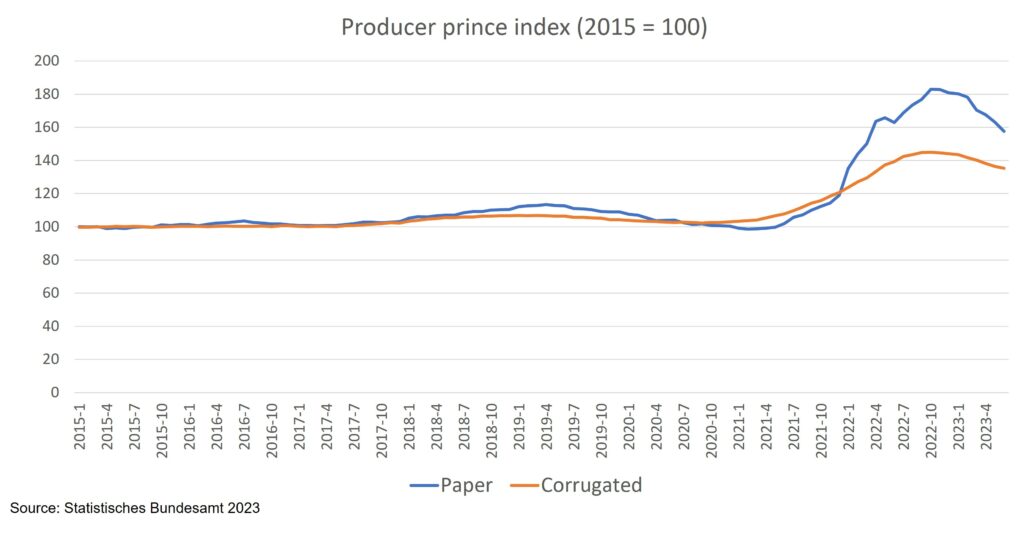Where are paper prices heading
Paper used to be a major consideration in print all along. The importance increased considerably in recent years, however. Not only did the printing industry experience supply shortages, also the prices increased drastically. This has a major impact on what media executives are ordering – specifically print or an electronic alternative. These shifts are usually not done on short notice, rather they need to filter through a marketing or corporate strategy. Accordingly, it is important to see where are paper prices heading in the mid term to gauge the impact.
Paper prices and availability do differ by grade, however, for a general outlook it can be better to have a look at general statistics, like the production price index published by the German statistical office. The most recent data shows the production price index up to June 2023. As an index, the data is based on the production costs in the year 2015. Paper production costs remained essentially flat until 2020. A small rise in 2018 and 2019 was wiped out during the early years of the pandemic. February 2021 marked a low point with an index value of 98.6, essentially indicating that production costs were lower than 6 years before. The cost basis changed drastically with the index reaching a high of 183 in October 2022. After hovering at a very high level for a shirt while, costs declined, dropping to an index value of 157.6 in June 2023.

Costs for corrugated had a similar trend, although rising not as dynamically as paper costs. Also, corrugated costs tailed off in 2023, although to a smaller extent.
Paper production prices are driven mainly by the cost of energy and of pulp. Energy prices went through the roof in Europe after Russia started their war against Ukraine. Energy prices have come down somewhat since, but remain high. Also, pulp prices increased as wood is in high demand for a number of activities, from packaging to sustainable buildings, to using wood as a source of energy. This shortage is not going to change as wood is increasingly being seen as an environmentally preferable option.
The high paper prices do have an effect on the printed volumes. Publishers are shifting towards electronic channels. Advertisers move to digital media, especially mobile devices to avoid rising print costs – even if environmental considerations are often cited as a reason for the switch.
Lower paper prices will help to avoid losing more print volume. Although the underlying cost factors remain unfavourable, there should be some more potential for cost declines. However, paper prices will remain noticeably higher than five years before.
In this respect, it is good news that the German state of Nordrhein-Westfalen is funding a joint research project among paper producers, suppliers, and researchers. It is also encouraging that paper production is seen as a core industrial activity, worth funding research for. The aim is to save 80% of the energy demand in paper production by 2045.
This will not help printing companies in the short term, however. It will be critical to monitor the production price index to have an indicator on where are paper prices could be heading and to position print as a future-proof media channel.
Leave a Reply